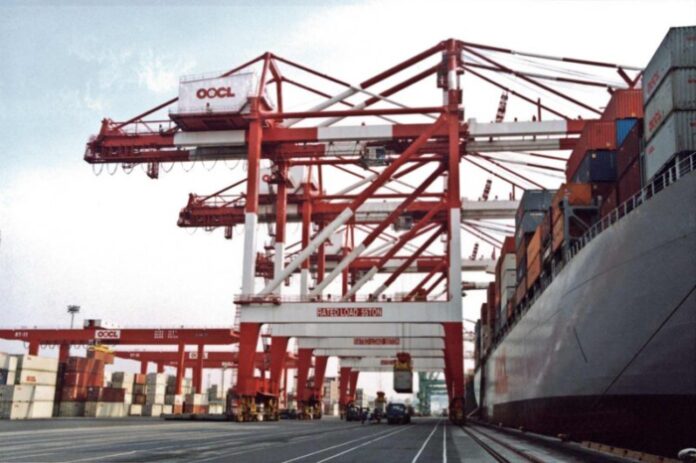
-
Cargo space on major shipping routes from the Far East on September 26-October 23 was lower year on year with October seeing the transpacific trough in four years
-
Analysts say large carriers’ increased blank sailings may be combining with the reported pullout of smaller operators from the transpacific corridor to stem the price slide
-
Freightos says transpacific rates to the US West and East Coasts had fallen 16% and 18% in October
Shipping capacity on the transpacific route fell to its lowest in four years in October 2022 as ocean carriers blanked sailings or took some vessels off all major trade routes from Asia on September 26-October 23 to stem the slide in freight rates, Xeneta container analytics platform says.
Xeneta said the average weekly capacity offered on the Far East-US West Coast route was 237,000 TEUs during the period, down 23.2% from the same period in 2021 and the lowest in four years since 2019. It is equivalent to removing nine 8,000-TEU sailings each week.
“The huge amount of capacity added to the US West Coast at the end of 2020 and during 2021 is now being removed, thanks to blank sailings, extra loaders, and certain services being canceled,” Xeneta analyst Emily Stausboll said on November 2.
“With so much capacity removed, the offered capacity on this trade is down by 13% compared to 2019. This shows that the congestion was building fast in the early COVID years but is easing considerably in 2022.”
The fall in capacity compared with 2019 comes despite a 14% increase in container volumes in the first eight months of 2022 versus the same period in 2019.
Looking at only August 2019, there were 823,000 TEUs transported from the Far East to the US West Coast, fewer than the 880,000 TEUs moved this August, when this year’s demand is down from both 2020 and 2021.
Market-watchers speculated that the impact of large carriers’ increased blank sailings may be combining with the reported pullout of smaller operators from the transpacific corridor to reduce capacity as a way of stopping the price slide.
The latest Drewry WCI composite index of $3,050 per 40-foot container is now 71% below the peak of $10,377 reached in September 2021. It is 19% lower than the 5-year average of $3,754, indicating a return to more normal prices, but remains 115% higher than average 2019 (pre-pandemic) rate of $1,420.
The average composite index for the year-to-date is $7,115 per 40ft container, which is $3,361 higher than the five-year average.
This week, ocean spot rates from Asia to the United States and Europe steadied near last week’s levels, said Freightos, another online platform.
Asia-US West Coast prices (FBX01 Weekly) dipped 3% to US$2,479 per 40-foot container (FEU) this week on the Freightos Baltic Index, down 87% from the same time last year.
On the Asia-US East Coast, rates (FBX03 Weekly) fell 2% to $5,671/FEU and are 71% lower than prices for this week last year, according to Freightos.
Freightos head of research Judah Levine said transpacific rates to the US West and East Coasts had fallen 16% and 18% respectively in October, but the price slides had slowed compared with the pace in September.
This was especially so for cargoes to the US West Coast, where rates had dropped 45%, and the US East Coast, where the rate decline was 24% in September, said Levine. Asia-Northern Europe rates, meanwhile, fell about 30% in each of the last two months.
“The sharper decline of prices to the West Coast is driven by a shift in demand to East Coast ports to avoid the still-unresolved West Coast port worker labor dispute,” Levine said.
He said small-scale labor disruptions this week may keep shippers sold on East Coast ports despite higher rates and longer delays, as the shift continues to drive port congestion there.
“As November starts and we move firmly into the typical air cargo peak season, falling volumes and stagnating rates at a time both would normally climb continue to suggest that there will not be much of a peak in air cargo this year,” Levine said.
While air cargo prices climbed until November last year, Freightos Air Index rates out of Asia were stable overall this October. The current rate of $4.45/kg from Asia to Northern Europe is 26% lower than last year, while the Asia-North America rate of $5.74/kg is 46% lower than last October.




